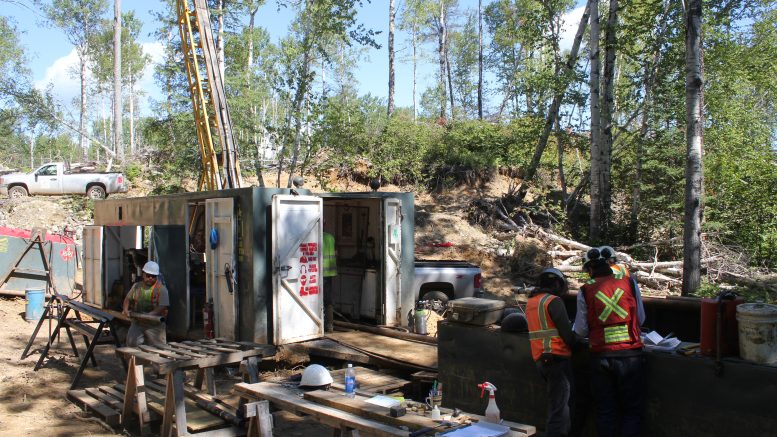Argonaut Gold (TSX: AR) has had a strong November, expanding its Mexican portfolio by acquiring the Cerro del Gallo (CDG) project from Primero Mining (TSX: P), and tabling a positive feasibility study for its 100%-owned Magino gold project in Ontario.
The CDG purchase closed on Nov. 27, with Argonaut paying US$15 million cash. Argonaut had US$37 million in cash at the end of September, plus cash flow from various operations.
Primero completed a definitive feasibility study for CDG in May 2012. It describes an initial seven-year life which could reach 14 years through a second-stage, carbon-in-leach, heap-leach mill expansion. The open-pit operation could produce 4.5 million tonnes per year for 95,000 equivalent oz. gold at US$700 per ounce.
“We see this as an advanced-stage exploration project,” Argonaut Gold president and CEO Peter Dougherty says in an interview. “Primero would have called this a development project, because they had already done a feasibility. I’m not ready to embrace that feasibility yet. I’d like to have the opportunity to look and see what we can do with this property.”

Core samples being observed at Magino in 2015. Credit: Argonaut Gold.
According to Dougherty, that means doing some metallurgical work as well as continuing to explore the 250 sq. km property.
“We would like to start with a resource base of roughly 750,000 oz.,” he says. “We know in the oxide they had identified roughly 32 million tonnes for about 700,000 ounces. They also had in the resource another 920,000 oz. in an additional — let’s call it — 40 million tonnes. Can we do something to pull some of that in? I don’t know. This is a very, very large package of land.”
CDG is located on the San Anton property in central Mexico’s Guanajuato state. It isn’t far from Argonaut’s four other Mexican properties.
Those include the 100%-owned El Castillo gold mine and San Agustin gold-silver mine, which form the El Castillo Complex in Durango, Mexico, as well as the 100%-owned La Colorada gold-silver mine in Sonora, Mexico.
Argonaut also owns 100% of the advanced, development-stage San Antonio gold project in Baja California Sur, Mexico.
But at Magino, located 40 km northeast of Wawa, Ont., the biggest news out of Argonaut’s feasibility study is the reduction from a planned 30,000-tonne-per-day operation to 10,000 tonnes per day. Argonaut suggested the larger operation in a May 2016 prefeasibility study, but quickly realized that while it was doable, it might not be the best idea.
“What we saw with that project was a $550-million capital number,” Dougherty says. “And we would look at the market cap of the company and we were looking at a $400- to $450-million market capitalization. What it meant was that type of project was out of reach for us. You could do it, but you would lever the entire history of the company. You would be betting the company as a whole.”

An aerial view of Argonaut Gold’s Magino gold propery in Ontario, located 40 km northeast of Wawa. Credit: Argonaut Gold.
For comparison, under the 30,000-tonne-per-day plan Argonaut would mine 112 million tonnes over 11 years at an average head grade of 0.9 gram gold per tonne for 3.2 million contained oz. gold. Under the new plan, it would mine 59 million million tonnes over 17 years at an average head grade of 1.1 grams gold per tonne for 2.1 million contained oz. gold.
The new plan also creates far less waste, down from 423 million tonnes to 232 million tonnes. Dougherty says this will lower capital expenses.
And he doesn’t entirely rule out the larger operation. He says Argonaut is open to forming a joint venture to make that happen, given the right opportunity.
“The beauty of the 10,000-tonne-per-day operation is that it permits the basis for any possible JV negotiation,” he says. “We built in some inefficiencies into the capital. We’re going to build it with enough capacity to run at 30,000 tonnes per day.”
Argonaut assumes a US$1,250 gold price in its Magino study. It estimates cash costs and all-in sustaining costs are US$699 per oz. and US$711 per oz., with a US$288 million after tax net present value at a 5% discount rate and a 19.5% after tax internal rate of return.

Argonaut Gold’s newly aquired Cerro del Gallo gold project in Guanajuato, Mexico. Credit: Argonaut Gold.
The Magino property sits within the Michipicoten greenstone belt, which contains volcanic, sedimentary and intrusive rocks metamorphosed to greenschist and amphibolite facies.
Argonaut has had a good few months. On Oct. 23 it announced commercial production at San Agustin, coming in on schedule and under budget by more than 20%.
Shares of Argonaut are priced at $2.57 apiece. The company has a $455-million market capitalization and a 52-week range of $1.48 to $2.98.
“We’re going to move through it very slowly, very methodically,” Dougherty says. “The great thing is we don’t have a gun to our head that says you have to do this tomorrow. We can take this at a slow, measured pace.”


Be the first to comment on "Argonaut pushes forward in Mexico and Ontario"